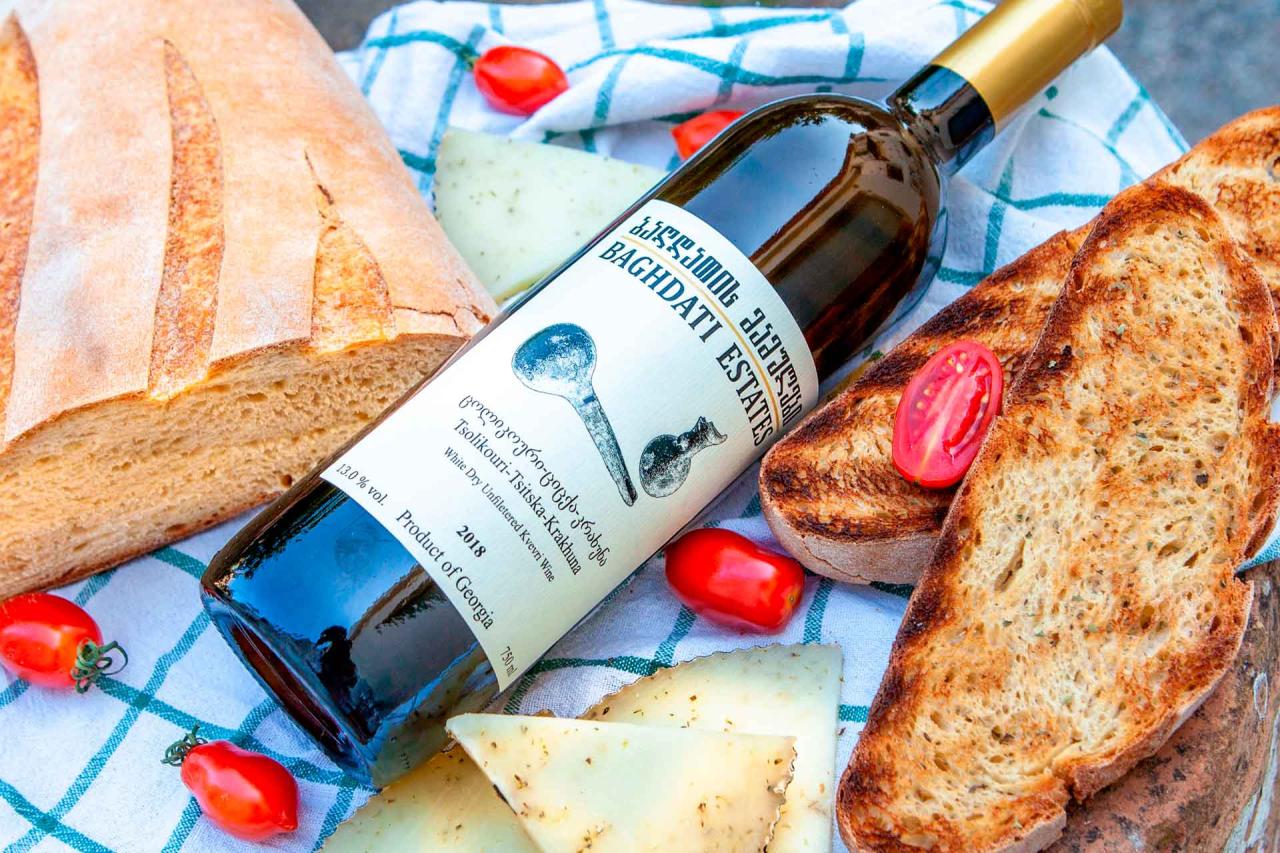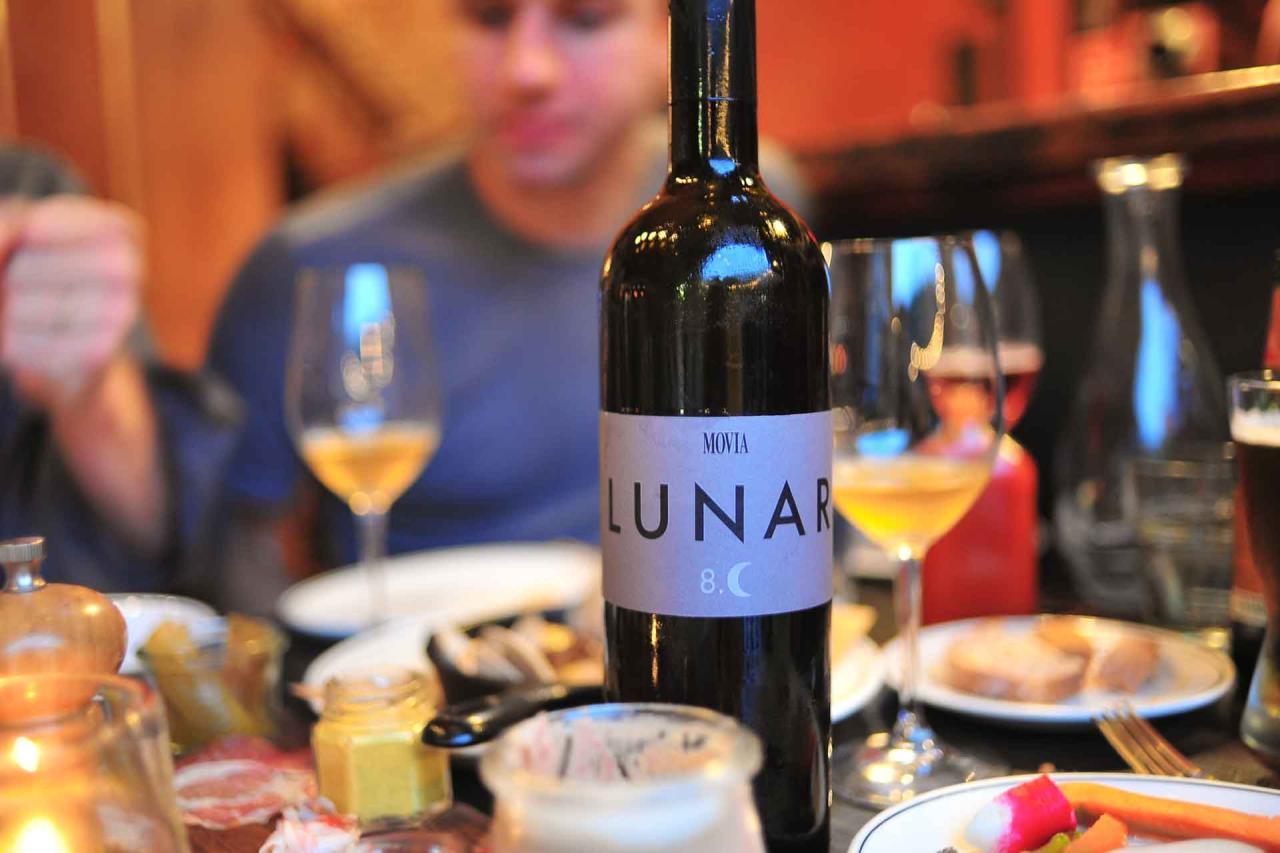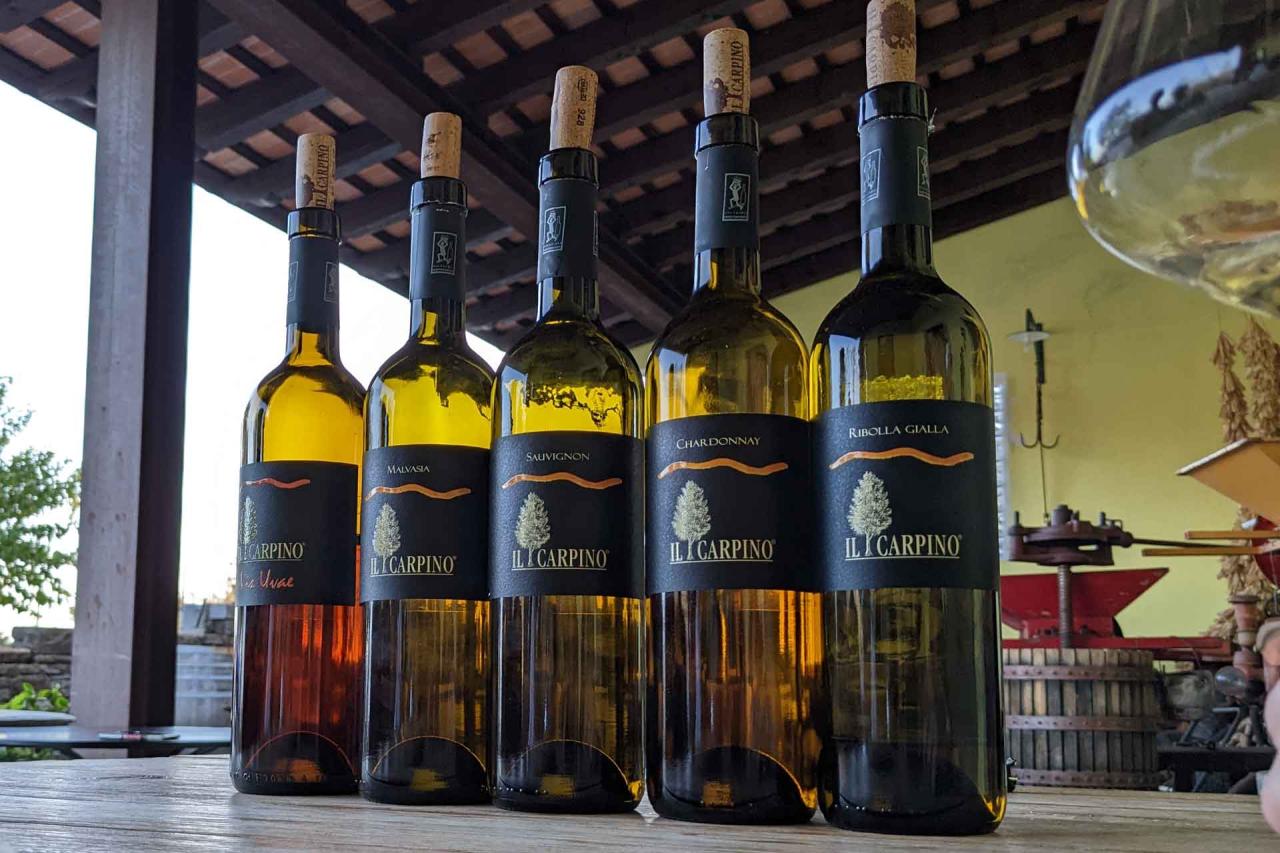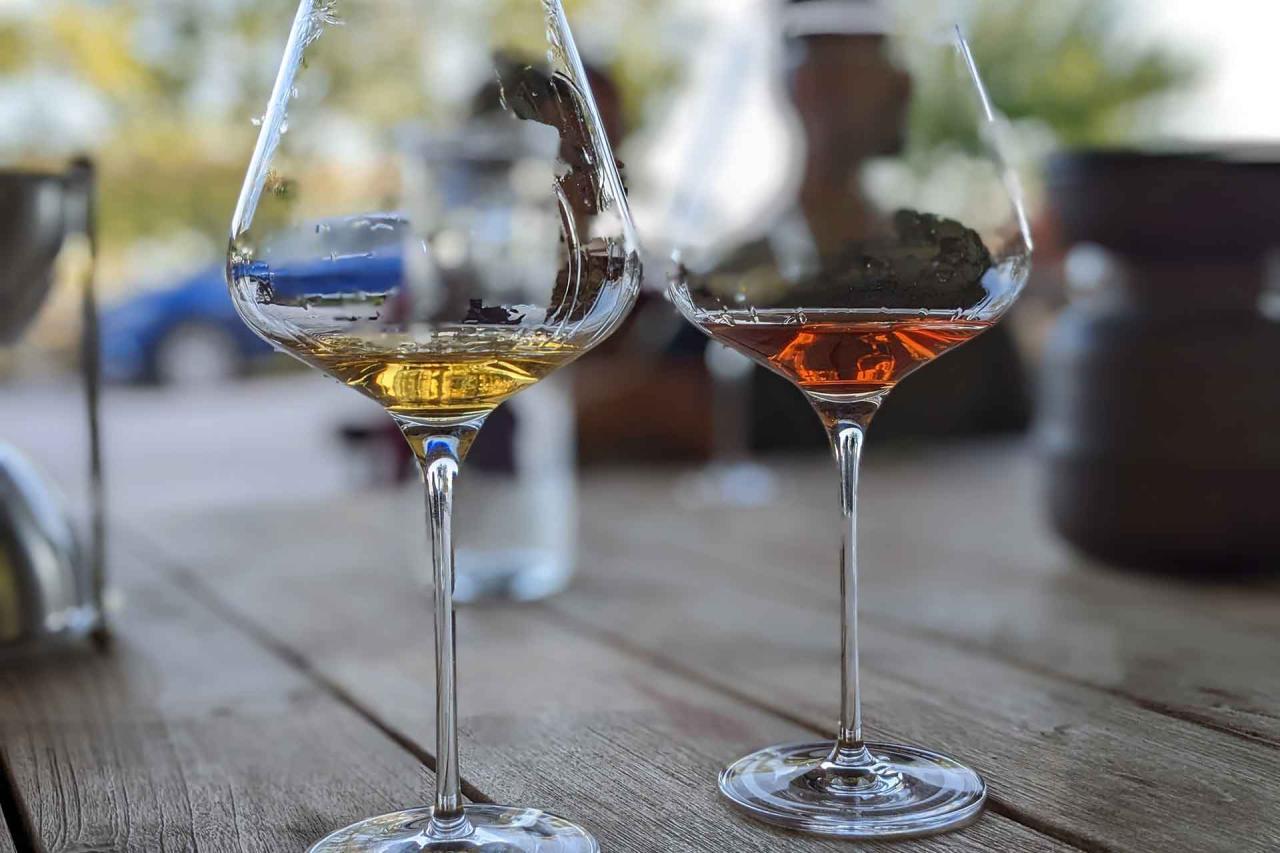The reasons for its surge in popularity could be based in a lot of things. First of all, the process of making orange wine tends to be more environmentally friendly, something that heavily concerns consumers. Furthermore, it’s a very different wine than the ones the average wine lover is used to drinking, and finally, its versatile flavors and scents make it a perfect match for various meals that you normally wouldn’t pair with wine.
In this article, we will focus on what is orange wine, otherwise known as skin contact wine, and how is orange wine made. Throughout the article you’ll see orange wine mentioned also as amber wine. These two terms refer to the same thing. Without further ado, let’s get into the specifics of orange wines.
What is orange wine?
Orange wine is essentially a wine made from white grapes but with the use of the vinification process that is employed for making red wines. During this vinification process, the skins of the grapes are left in contact with the juice for some time. The grape skins and seeds contain chemical compounds called tannins and anthocyanins, which are respectively responsible for the astringency and the color of the wine.
Get updates on the latest posts and more from Wine Bugle straight to your inbox.
Furthermore, the process of making orange wine is usually characterized as “natural”. During the traditional winemaking process, winemakers might use specific strains of yeasts, the organism that converts the sugars in the grape juice into ethanol, to provide the wine with specific aromas and flavors.
During orange winemaking, the yeasts that are used are frequently the ones that are naturally found on the grapes when harvested from the vineyard. In addition, during orange winemaking, winemakers avoid the use of various chemicals that are normally employed in traditional winemaking, like sulfites, resulting in a low-intervention, natural wine. However, because the legislation concerning orange wines isn’t really set yet, the winemaking practices that each producer employs might vary.
It is also worth mentioning that orange wine hues may be different from wine to wine. There are two factors that contribute to this variation of colors: the grape variety used and the amount of time the grape skins are left in contact with the juice.
Some grape varieties naturally contain less anthocyanins and tannins, which means that they will produce wines lighter in color and in taste. The amount of time that the grape skins stay in contact with the juice can range from 4 days to up to over a year!
As you may have guessed, the longer the skin-contact process, the more chemical compounds are released into the juice, which means that the wine will be darker in color and more astringent.
Is orange wine made with oranges?
Orange wine isn’t made from oranges and it’s also not a drink based on orange juice and wine, like a mimosa. It’s 100% made from grapes, much like any other wine.
Due to the fact that the word “orange” is used to describe this type of wine, many people might get confused and believe that oranges play a part in the winemaking process, but that’s not the case.
What is skin contact wine?
Skin contact wine is a synonym for orange wine. These two terms refer to a wine that has been produced by leaving the grape skins in contact with the juice after pressing the grapes. These terms can be used interchangeably to describe the same product.
Amber wine
Amber wine is the name they use in Georgia to describe an orange wine. The country of Georgia actually has a very rich history in orange winemaking. For over 4000 years, the people of Georgia have been using clay, lemon-shaped pots called qvevri to make orange wine. These pots are sealed and placed underground, where the fermentation process happens.
As a general rule, keep in mind that amber wines are all orange wines, but not every orange wine is an amber wine, since it has to come from Georgia to be characterized as that.
What does orange wine taste like?
In general, we could say that an orange wine tastes like the funky version of a white wine made by the same variety. The word “funky” is something that you’ll see a lot when reading about orange wines, and it’s a word that creates some controversy among orange wine fans, because some feel that it has a negative sense, while others believe it’s a very appropriate word to describe these wines.
Depending on the variety of the grape used to make the wine, the flavors and aromas will differ quite a bit from wine to wine, but there are some characteristics that they all have in common.
Orange wines are regarded as robust and full-bodied, with a flavor comparable to red wines and a freshness similar to white wines. Citrus fruit, herbs, stone fruit, nuts, tropical fruit, ripe apples, juniper, sourdough, zest of dried citrus fruits and linseed oil are the most typical flavor notes. Many wine connoisseurs even compare these wines to cider or other varieties of fruit beer.
Where is orange wine produced?
Like we mentioned, orange wine has a rich history, originating in Caucasus in the area we know today as Georgia, but the practices of orange winemaking have only become popular again during the last two decades. While orange wines are still rare, many prominent wine making countries all over the world produce them. Let’s have a look at some of the most famous ones.

Georgia
It is impossible to talk about orange wine without mentioning Georgia, since this is where it all began. The use of the qvevri pots played an important role in the winemaking of this style during ancient times, but many local producers still use this method, paying homage to the traditions of the area. The history of the country, along with its more than 500 indegenous varieties and its unique terroir make it the perfect place to start exploring when learning about orange wines.
Find out more in our in-depth article "Georgian orange wines".

Slovenia
The Vipava and Karst wine area in Slovenia is where orange wine first appeared. They are now also made in the Slovenian Istria and Primorska wine areas due to their increased local appeal. Slovenian orange wines may have a brief (a few days) or very extended skin contact period (up to half a year). Aleks Klinec is the most well-known Slovenian orange wine maker worth mentioning, and both orange wine connoisseurs and novices should give his orange wines a try.
Find out more in our in-depth article "Orange wine from Slovenia".

Italy
Italy's production of orange wine is still rather new, but it shows great promise. Winemaker Josko Gravner traveled to Georgia in 1997 from his estate in Italy to retrieve the huge clay amphorae (qvevri) that are now buried beneath his cellar. He was the one who introduced orange wines to the country. The majority of orange wine is produced in Friuli-Venezia Giulia, a region of northeastern Italy close to the Slovenian border. There you’ll find orange wines made from local grapes such as Sauvignon Vert (Friulano), Ribolla Gialla, and Pinot Grigio.
Find out more in our in-depth article "Italian orange wine".
Australia
Skin-contact white wines are the best example of Australia's growing artisanal wine making landscape.In Australia, the name that they use for a skin contact wine is "skinsy", so don't be confused if you see Australian orange wines mentioned as such. A group named Natural Selection Theory burst onto the market in 2010 with a skin-contact Semillon aged in 900ml wax-sealed ceramic pots, much like a qvevri. Although the group is no longer active, the three remaining members, Anton van Klopper, Tom Shobbrook, and James Erskine, continue to manufacture skin-contact whites under their own labels.
Other Countries
The popularity of orange wines has traveled all around the world, and many producers around the globe have started exploring this style of wine. Orange wines are being made experimentally in the United States, particularly in New York, where the Rkatsiteli ("Awr-kat-seh-telly") grape variety is produced.
A region east of Burgundy in France produces rich orange-hued wines. The Jura region produces nutty-tart wines named Vin Jaune and Côtes du Jura, both of which use an oxidative winemaking approach and a rare grape called Savagnin (and sometimes Chardonnay).
You’ll also find orange wines in other countries including Austria, Greece, South Africa and many more.
Conclusions
It really isn’t that simple to explain what is an orange wine and how it is made, and it is very understandable that newbies to the orange wine scene still get confused about what makes orange wine orange. However, we hope that this article has provided you with answers to all your questions about orange wine.
This style of wine is expected to only grow in popularity in the years to come, so it’s better to start learning about it now. If you enjoyed this article make sure to share it with your wine-lover friends and host your own orange wine tasting evening, where you’ll get to discover this new and versatile type of wine.
Cheers!

